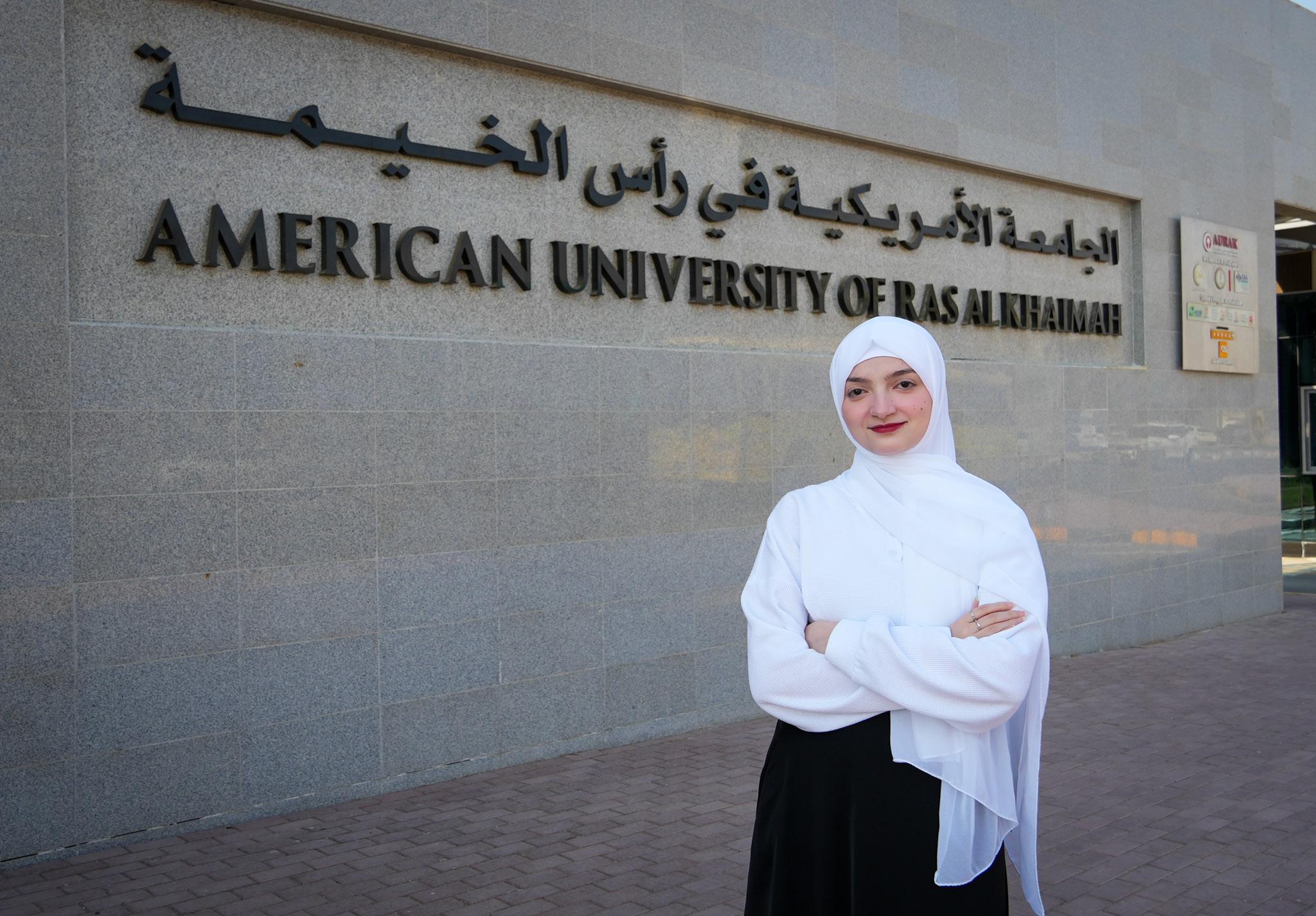
4 minute read
From Resistance to Integration:
A Reflection on my Journey with AI in Academia
Nour Mostafa Kamel Bachelor of Science in Computer Engineering
Advertisement
American University of Ras Al Khaimah (AURAK), UAE
As a senior student majoring in Computer Engineering at AURAK, I find myself, like many others during these times, contemplating the promise and perils that come with the trending tides of Artificial Intelligence (AI). AURAK, with its forward-thinking ethos and excellence-driven culture, has given me ample opportunities to engage firsthand with various types of AI services across diverse tasks. In this essay I will share some of my experience-based insights, as I consider AI’s role in education: Is it a tool, tutor or temptation?
AI promises transformative advancements across all domains, and education is no exception. Reflecting on my own experience, I am grateful that tools like ChatGPT weren’t around when I took my first ever coding class. The struggle of manually tracing errors, chasing missed semicolons and writing my own comments on every line—lest I forget its functionality—were all crucial coordinates in my learning trajectory. The keyword in my previous sentence is “struggle”; it was the aspect of struggling that made learning breakthroughs hard to forget. Perhaps a wise chemical in my brain was signalled to appreciate the knowledge more, and hold onto it tighter, in the face of how hard and long it took for me to acquire and make sense of it. The speed at which ChatGPT answers our questions and “solves” our problems results in our equally fast-paced forgetting of what we’ve learned, and in this I see one of his gravest risks.
Adopting AI into my workflow has been a journey fraught with skepticism. I remember being the last in my friend circle to openly use it, if I used it at all. My initial strong aversion stemmed from the huge concern it posed about the authenticity of my work and my own self-image of my integrity—whether academic or otherwise. I often asked myself: “What if one time I get the full mark and wonder if it is me who earned it or ChatGPT? What toll would that take on my confidence in my abilities, and, more importantly, would it make my brain lazy? How do I leverage it without losing myself—my voice—in the process?” In its early days, it was famously known the lazy students’ way out. Nevertheless, and despite my initial reservations, it is increasingly clear that AI is becoming more and more reliable and refusing to adopt it would mean losing a competitive edge. I began to see my professors openly discuss using it and, suddenly, it wasn’t so scandalous or shameful anymore. It was a matter of use it correctly or get left behind, use it incorrectly and risk compromising the career you’ve barely begun to establish. I’ve learned, over time, to consult AI websites for tasks like re-explaining slides that didn’t make sense to me or answering super specific queries that typical Google searches fail to address. It also helped speed up the process of learning new programming languages, not only by writing highly customized code (that sometimes doesn’t run), but also explaining it line by line. While I miss chasing my semicolons, AI has become a sort of virtual tutor: it replies instantly and doesn’t get tired of my endless questions. It is as though every student in our generation now has an unofficial minor degree in Prompt Engineering.



Although AI tools can be incredibly helpful, they’re also far from perfect. One of their biggest problems, for example, is hallucinating resources for their claims or rambling with flowery prose where it doesn’t fit. How many times did you click on a link given to you by ChatGPT only to end up nowhere? To use AI effectively, you must learn the ropes and invest time in evaluating its outputs. In fact, even then, the results could often still be of a highly questionable quality. What most students really don’t consider, however, is that writing is a process, not just a product. If a student doesn’t go through the process, the final product is not reliable evidence of learning. Brain synapses are formed during the (often frustrating) moments of figuring out how to articulate ideas or find that missing piece in the equation and skipping this step with AI shortcuts undermines the development of critical thinking. As I engage with AI tools on a day-to-day basis, I make a conscious effort to never allow it to take over my creative process or do the “thinking” for me. The author Joanna Maciejewska said, “I want AI to do my laundry and dishes so that I can do art and writing, not for AI to do my art and writing so that I can do my laundry and dishes,” which deeply resonates with me. Engineering, at least from a design perspective, is a form of art after all.
Even before the advent of AI, the education system was due for a significant overhaul. Perhaps AI is the catalyst that will finally bring about the changes future generations deserve. Looking forward, I do not find myself in fear that AI might “take over” my future job. One of my professors told us in a class that the invention of ChatGPT for programmers is like the invention of calculators for mathematicians. It speeds up the process, allowing us to focus on solving meaningful problems rather than wasting time on repetitive tasks. AI is, at its core, a tool—a powerful one that can enhance productivity, streamline workflows and open up new paths of possibility and inspiration. It pushes us to rethink traditional structures, enabling engineers to explore uncharted territories more efficiently. It is evident to me, as someone who experienced the “AI boom” in the very middle of their degree, that AI use should be withheld in foundational courses. Rather, AI tools should be reserved for use in later stages when individuals are more equipped with a strong knowledge base and can utilize it for productivity and assistance rather than for salvation. We should leverage AI’s capabilities to amplify our efforts rather than substitute them. AI is here to aid, not to replace, and recognizing this distinction is key to unlocking its true potential in any domain.






